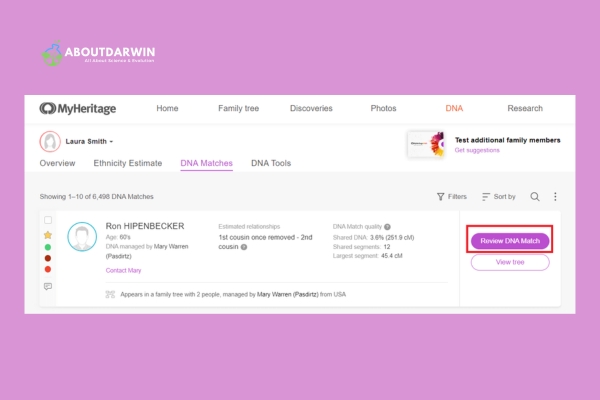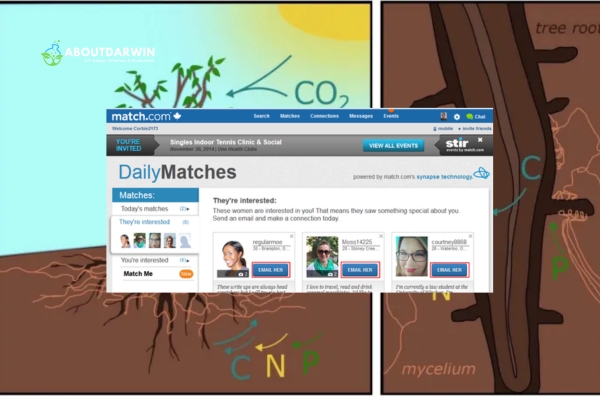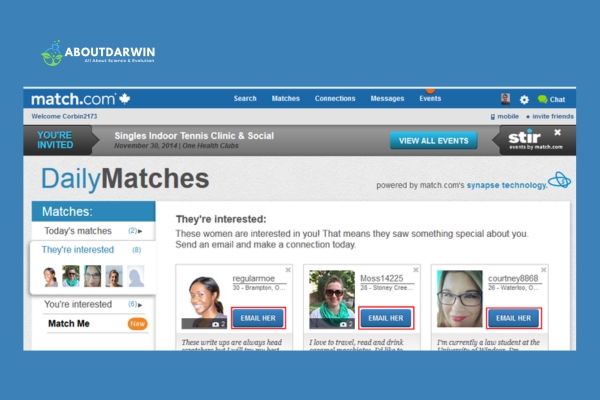Physical Address
304 North Cardinal St.
Dorchester Center, MA 02124
Have you ever wondered which DNA matches to research first in your family tree quest? Here’s a secret: diving into your genetic past can be like a treasure hunt! But with so many clues, where do you begin? Keep reading, because I’m about to share some nuggets of wisdom that will help you find the ancestors who truly matter.
When it comes to investigating your DNA matches, start by focusing on the ones who share the highest amount of DNA with you. These are usually close relatives – such as first or second cousins – and they hold the key information that can unlock doors in your family history. Trace these high-percentage matches first, and you’re likely to make significant discoveries!
Contents
A great way to get the most out of the list of your DNA matches is to separate them into groups that cluster around one of your ancestral lines. If you can divide your match list into groups, you can focus on finding the most recent common ancestor (MRCA) that you share with that cluster of people.

When diving into your DNA matches, start by asking yourself, “What am I looking to find out?” This question is huge because having clear goals can help stick to the most important matches.
Let’s say you want to learn more about your great-grandmother’s side of the family. That goal tells you to pay more attention to people related through her line. It’s like wanting to find a red shirt in a big pile of laundry – it gets much easier when you know what color you’re looking for.
So setting goals means that search won’t be all over the place. It points straight toward parts of the family tree that answer questions, like finding out where some relatives lived way back or if there was someone famous in the family.
The next step in figuring out which DNA matches to research first is looking at how much DNA we share – that’s measured in something called centimorgans or cMs for short.
Here’s a little cheat sheet for how many cMs usually match up with different family relationships:
These numbers are incredibly important because they give you clues about how closely you are related to someone. For instance, if someone shares a significant number of centimorgans with you – say around 3,000 – then you know they’re very closely related; they could be one of your parents or maybe a child.
Now here’s why some relationships are better starting points for research: let’s imagine building a puzzle. Starting with pieces from the edge – those are your close relatives because just like puzzle edges they provide something solid before tackling the messy middle part filled with distant cousins and all.
Focusing on these high-cM matches first based on what you want to learn about your family history helps you use both time and effort wisely before jumping into less closely related folks who share fewer centimorgans with you.
Also Read: Post-Earthquake Guide: Safeguard Against Infectious Diseases
Looking into your roots can be much like putting together a giant puzzle. The pieces are all there—you just have to figure out where they fit. Two of these important pieces are family trees and shared matches that you’ll encounter.

Family trees that come along with your DNA matches are like treasure maps that lead to your past. They can show you how you might link up with someone else who has taken the test. Here’s how you should approach this:
By doing this, you get a better feel for which branches on your family tree might connect with theirs—and where your stories might intertwine.
The shared matches tool is like having friends in common—it shows you people who share DNA with both you and another match of yours.
By leveraging these shared connections, we can cut through the forest of endless data and hone in on those relatives most pivotal to our search—the ones hiding just beneath the surface waiting to tell their part of our story.
Also Read: Mueller Hinton Agar (MHA) Composition, Principle and Uses
When you send a message to someone you’ve matched with, think about how you might be connected. Keep your messages friendly and short, so they don’t feel too overwhelmed at once. It helps to ask simple things like, “Do we have relatives from the same place?” This starts a conversation without making anyone worried or putting them on the spot.

Yes, if you run a drone business, it’s wise to have insurance. It protects against accidents and damage while operating drones.
You might skip drone coverage if you’re flying drones purely for fun and not commercially, but even personal use can benefit from some form of insurance.
Personal drone insurance offers protection for hobbyists against potential damages or liability claims when flying drones for non-commercial purposes
Commercial drone insurance covers businesses against liabilities and risks associated with using drones for commercial activities.
Also Read: Exploring TCBS Agar: Composition, Uses and Preparation
Finding out where you come from can be a thrilling adventure. When I get a DNA match notification, I know I have clues to my past waiting for me. But to make sense of these clues, I sort out which DNA matches to research first. It’s like piecing together a puzzle with care. Setting clear goals steers my focus to certain branches of my family tree.
Understanding shared centimorgans guides me toward likely relatives, and available trees can reveal names or places tied to my ancestors. Communicating with these matches might just unlock stories and connections that were hidden by time.